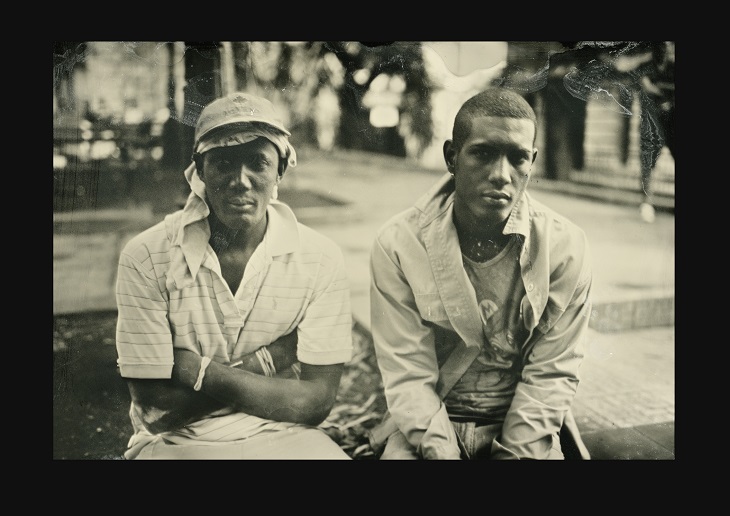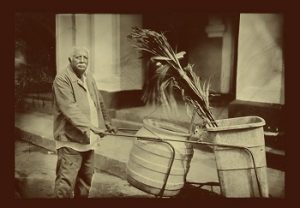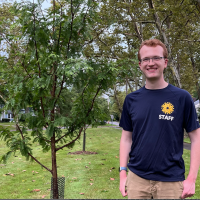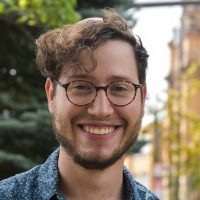This blog post is part of our #CLEvana series, sharing stories and insights from our Creative Fusion: Cuba Edition partners. In this post, Cleveland Print Room (CPR) Founder & Executive Director Shari Wilkins shares highlights from the Creative Fusion cohort learning trip to Cuba earlier this year. The trip was an opportunity to strengthen artistic alliances between Cleveland and Cuba ahead of the Creative Fusion: Cuba Edition artist residency in Cleveland this spring. The Cleveland Print Room (CPR) and the Cleveland Museum of Art (CMA) are hosting award-winning Cuban artist Sandra Ramos, whose work has been shown in solo exhibitions and residencies around the world, as well as Cleveland photographer Greg Martin, who specializes in wet plate photography.
We arrived in Cuba on a Sunday afternoon and squeezed in a meeting with Cuban photographer Lissette Solorzano, whose analog and digital work addresses a wide variety of topics, from street art and architecture in Havana to the homeless in New York. A particularly moving series was Ephemeral Ghosts, which pictured people nearing death.
Day 1
A Monday morning walking tour of Old Havana was followed by a presentation from cohort member Damaris Punales-Alpizar, who provided an excellent orientation to Cuban politics and policy of the past and present. Another presentation, focused on preservation and development in Havana, outlined current and future urban planning efforts in the city.
During our visit to the offices of Havana Biennial, we learned about the process of organizing a first-class biennial with minimal funding. Later, we visited the Instituto Superior de Arte, where Deputy Dean of the Visual Arts Faculty and professor of photography Ossain Raggi gave us a tour of the visual art school, famed for its radical forms and artisanal construction, and showed us examples of his work.
Day 2
We visited the Fabrica de Arte Cubano (FAC), a world-famous multi-service arts space. There we talked with Earnesto, one of its founders. Cleveland artist Greg Martin, Barbara Tannenbaum of the Cleveland Museum of Art (CMA), and I met with the photography curators to tour the current exhibition. This visit enabled us to look at their successful model and consider how something similar might work in Cleveland and how we could foster a future collaborative relationship with the FAC. In our discussions with the FAC staff, the issue of relevance of place came to the forefront. By focusing on how place and context influence programming and community engagement models, this visit helped our organization see the importance of seeking – and demonstrating – relevance.
During the afternoon of the second day, Barbara, Michael Gill of CAN Journal, and I visited Cuban artist Sandra Ramos’s home and studio in the Miramar neighborhood of Havana. Sandra’s sister and mother treated us to coffee, conversation, and a tour of work from her 25-year career.
A visit to the Ludwig Foundation concluded an already productive day in Havana. The discussion centered on the Cuban art scene and the transfer of information in the country. The scarcity of resources and the importance of information flow surfaced as topics again and again in this and other discussions throughout trip. Cubans’ ingenuity and perseverance in the face of these issues is something we can learn from.
By the end of two very full days, I had already made numerous connections and had been presented with an overwhelming amount of ideas that could impact our organization in the future.
Day 3
Greg and I began the day with a visit to the studio of photographer and wet plate artist Pilar Rubi to borrow rare materials for a wet plate shoot in the coming days. The materials to create analog photography must all be brought in by visiting artists, so it is almost impossible to find critical chemistry for the tintype/ambrotype process. After Greg and I visited with Pilar and received the necessary materials, we continued to a park in Old Havana frequented by locals where Greg spent five hours shooting images. It was a successful day with the production of 12 wet plate images.
Later that afternoon, Barbara, along with Lillian Kuri of the Cleveland Foundation, Grafton Nunes of the Cleveland Institute of Art, and Steve Litt of the Cleveland Plain Dealer, visited the Fototeca de Cuba, the country’s center for photography. They had an in-depth discussion with its director, artist Nelson Ramirez de Arellano Conde, on the relationship between politics and the arts in Cuba. Nelson shared examples of his own work, which uses photography conceptually, and assembled images by Cuban photographers he considered of interest for Barbara’s digital billboard exhibitions of Cuban photography in Cleveland.
Day 4
Day four began with a trip to Matanzas where Greg and I broke from the group for the remainder of the visit to the town. With help from Hannah Santisi of the Cleveland Foundation, we set up the wet plate station at the Matanzas city center, where Greg made portraits for four hours until our scheduled departure. He created 12 tintypes/ambrotypes on that day, increasing his total to 24 works for the duration of the visit.
That evening, Greg and I visited Nelson Ramirez de Arellano Conde at his home and studio. The Cleveland Print Room cemented a collaboration with Fototeca de Cuba in which we will send an artist to Cuba for one month. Fototeca will serve as the touchstone organization for the Cleveland artist during their stay in Cuba. This was a valuable connection made for both of our organizations.
On the return trip home in Miami, Barbara, Greg and I made a studio visit to Cuban artist Sandra Ramos to firm up the details of her Creative Fusion residency this year.
Reflecting on the Experience
Greg, Barbara and I found this trip to be a very constructive, positive experience for us. We are grateful for the opportunity to step outside our routine in Cleveland, immerse ourselves in the culture of another country, and meet and build relationships with Creative Fusion cohort members and Cubans. It gave us a different perspective that enabled us to look at our own organization through fresh eyes. The connections made through this trip were astounding and will only enrich our experience and ties with Cuba and our cohort collaborators.
The partnership between CPR and the CMA paired our small organization with a much larger organization for the first time. This is no small feat. The relationship between CPR and CMA is moving forward seamlessly on this project. Additionally, the trip served to introduce and enhance social relationships among Cleveland cohort managers, leaders and artists, which will serve us well at home in our collaborations throughout this year in the Creative Fusion program, and into the future.
At the Cleveland Print Room we are excited to continue to build and strengthen our alliances with Cuba’s cultural leaders, as well as the local Cleveland cultural organizations that we are grateful to have gotten to know on this level.
Learn more about Creative Fusion: Cuba Edition here, and follow #CLExHAV and #CLEvana on social media for the latest!




